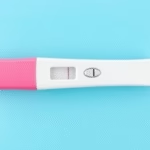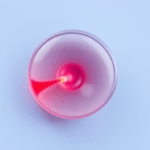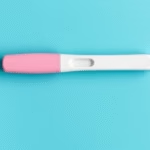Understanding Implantation Bleeding and BFP
When a woman conceives, the process involves several key milestones, one of which is known as implantation bleeding. This occurs when the fertilized egg attaches itself to the lining of the uterus, usually around six to twelve days after conception. For many women, implantation can cause light bleeding or spotting, which may lead to confusion regarding its significance. Knowing how long after implantation bleeding a positive pregnancy test result—commonly referred to as a BFP (big fat positive)—can occur is crucial for many trying to conceive.
A typical cycle for women runs about 28 days. Identification of fertile days, ovulation, and understanding the phases of the menstrual cycle can help in estimating when to take a pregnancy test after experiencing implantation bleeding. The timeline can vary from person to person and impacts when a woman may expect to see a BFP. Such timing clarifies the relationship between implantation bleeding and the confirmation of pregnancy through a positive test. In this guide, we will explore the timeframe one can expect a positive result and much more.
What is Implantation Bleeding?
Implantation bleeding is a light spotting that some women may experience when a fertilized egg attaches to the uterine wall. This process typically happens between six to twelve days after fertilization. The key features that help distinguish it from menstrual bleeding include:
- Color: Implantation bleeding is usually a light pink or brown, unlike the bright red of a standard period.
- Flow: It is much lighter and shorter in duration, lasting from a few hours to three days.
- Timing: Occurs well before a woman’s expected period and typically follows ovulation.
The occurrence of implantation bleeding is quite variable, affecting approximately 20-30 percent of pregnant women. Women should not panic if they do not experience this symptom, as its absence is entirely normal.
When you notice implantation bleeding, it signals a high chance of pregnancy, and many women are eager to confirm this with a home pregnancy test.
How Long After Implantation Bleeding Should You Test?
The window for taking a pregnancy test after experiencing implantation bleeding largely depends on the timing of ovulation and fertilization. If you suspect pregnancy due to spotting, the best time to take a home pregnancy test is:
- Wait about 3-4 days after the bleeding stops. This generally aligns with one week after ovulation.
- Assess the sensitivity of the pregnancy test you are using. Some tests can detect pregnancy hormones a few days before your missed period.
It is important to understand that hCG (human chorionic gonadotropin) levels double approximately every 48 hours in early pregnancy. Testing too early may result in a false negative, as your body may not have produced enough of the hormone yet.
Each pregnancy is unique, and women should stick to their usual routine of testing a week after a missed period for the most accurate results. Patience is crucial.
Understanding BFP and Its Relation to Implantation Bleeding
BFP simply refers to the positive result on a pregnancy test indicating the presence of hCG hormone. After implantation bleeding, if the body begins to produce hCG, a home pregnancy test should begin to reflect that. Generally, you will begin to notice:
- A clear positive test about 4-5 days after the bleeding has stopped.
- Stronger positive results appear as you continue to wait due to rising hCG levels.
Understanding this connecting timeline assists in managing expectations during the early stages of pregnancy. Always bear in mind that individual physiology can alter these timelines, and not everyone will test positive on the same day.
Common Myths About Implantation Bleeding and Testing
The anxiety and excitement surrounding implantation bleeding and testing can lead to the emergence of common myths. Here are a few to clarify:
- Myth: All women experience implantation bleeding.
- Fact: Only a fraction (20-30 percent) of pregnant women notice this symptom.
- Myth: A very dark or bright red color means you are not pregnant.
- Fact: Implantation bleeding can vary in color and is often lighter than regular period blood.
- Myth: You must wait until you miss your period to take a test.
- Fact: If you experience implantation bleeding, testing in 3-4 days following can yield an accurate result.
Tips for Taking a Home Pregnancy Test After Implantation Bleeding
To increase your chances of getting an accurate BFP, consider these tips when taking a home pregnancy test:
- Choose a high-sensitivity test that can detect lower levels of hCG.
- Take the test in the morning when hCG levels are typically higher.
- Follow the instructions carefully for the best results.
- If you receive a negative result but still suspect pregnancy, wait a few more days and test again.
Patience is essential during this waiting period. Be cautious of taking multiple tests too soon, as it can lead to unnecessary anxiety. A clear BFP will provide greater clarity.
When to See a Doctor After Implantation Bleeding
It’s advisable to consult a healthcare provider if you notice:
- Heavy bleeding similar to a period.
- Pain or cramping that is severe.
- Symptoms of an ectopic pregnancy, such as sharp pains in one side of the abdomen.
Your doctor can provide appropriate assessments, including blood tests to measure hCG levels, ensuring that your health remains a priority during this exciting period.
Final Thoughts
Understanding the relationship between implantation bleeding and the timeframe for achieving a BFP is vital for women navigating the early stages of pregnancy. If you notice light bleeding shortly after conception, it can indeed be a hopeful sign. The majority of women may test positive in about 4-5 days after implantation bleeding has occurred. Individual experiences will vary significantly, which emphasizes the importance of patience and following a structured testing approach.
To sum up, implantation bleeding is a normal sign of pregnancy for some women and serves as a precursor to when a home pregnancy test can accurately depict a positive result. Always consult with a healthcare provider regarding any unusual symptoms or concerns. Remember, every woman’s journey is unique, and remaining positive during the wait can make the experience less stressful and more hopeful.
Frequently Asked Questions
-
How long after implantation bleeding can I take a pregnancy test?
It is recommended to wait about 3-4 days after the bleeding stops for the most accurate results.
-
What does implantation bleeding look like?
Implantation bleeding typically appears as light pink or brown spotting, lasting only a few hours to three days.
-
If I did not experience implantation bleeding, does that mean I am not pregnant?
No, many women do not have implantation bleeding and can still be pregnant.
-
Is implantation bleeding the same as my period?
No, implantation bleeding is lighter and shorter than a regular menstrual period.
-
Can stress affect the timing of my period after implantation bleeding?
Yes, stress can impact your menstrual cycle, which may affect how soon you can accurately test for a pregnancy.
Further Reading
What Type of Psychotherapy Is Best for Anxiety?







